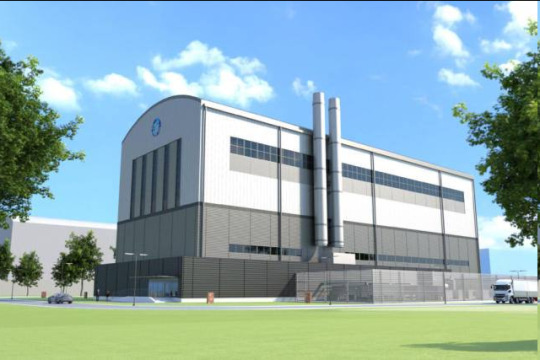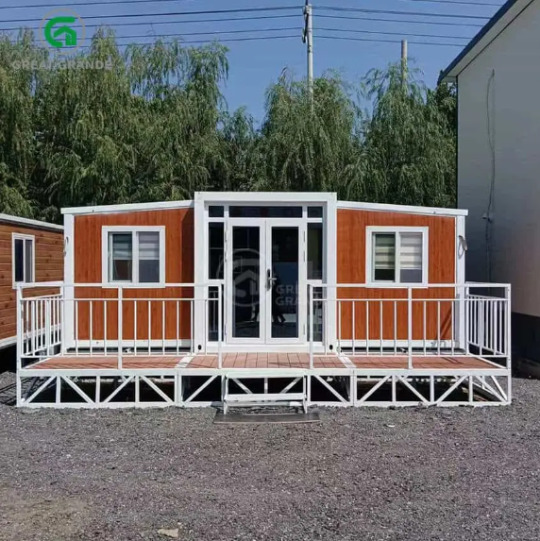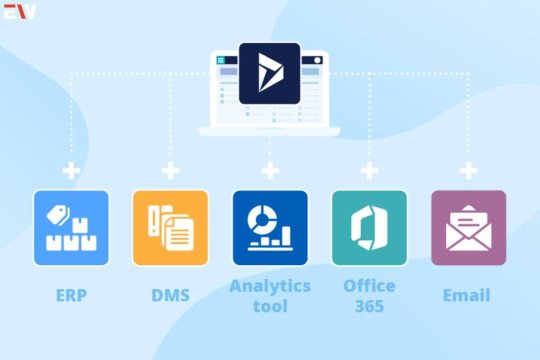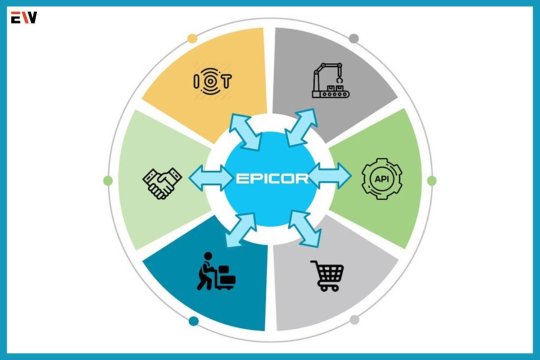#Modular Structure Market
Explore tagged Tumblr posts
Text
we need everyplaces
one of the things that we seem to forget in our ideas of world change is how space (as in the spatial environment) is created, recreated and structured. something that i've been thinking about is how we have rigid uses for spaces that are reinforced by their designs. i think that for our liberated societies, we need liberated spaces. Rather than having spaces that are *obviously* homes, shops, etc, we could create modular spaces that ask for input from the users, shaped and reshaped to the needs and desires. A spatial usufruct, with a focus on the ephemerality and contextuality of needs and wants. What if a street was able to become a market, then a concert venue, then a wrestling ring, then a campground, where the design of the space was able to reshape around those events.
42 notes
·
View notes
Text
Google strikes a deal with a nuclear startup to power its AI data centers

🔹 Google is turning to nuclear energy to help power its AI drive. On Monday, the company said it will partner with the startup Kairos Power to build seven small nuclear reactors in the US. The deal targets adding 500 megawatts of nuclear power from the small modular reactors (SMRs) by the decade’s end. The first is expected to be up and running by 2030, with the remainder arriving through 2035.
🔹 It’s the first-ever corporate deal to buy nuclear power from SMRs. Small modular reactors are smaller than existing reactors. Their components are built inside a factory rather than on-site, which can help lower construction costs compared to full-scale plants. Kairos will need the US Nuclear Regulatory Commission to approve design and construction permits for the plans. The startup has already received approval for a demonstration reactor in Tennessee, with an online date targeted for 2027.
🔹 The company already builds test units (without nuclear-fuel components) at a development facility in Albuquerque, NM, where it assesses components, systems and its supply chain. The companies didn’t announce the financial details of the arrangement. Google says the deal’s structure will help to keep costs down and get the energy online sooner. “By procuring electricity from multiple reactors — what experts call an ‘orderbook’ of reactors — we will help accelerate the repeated reactor deployments that are needed to lower costs and bring Kairos Power’s technology to market more quickly,” Michael Terrell, Google’s senior director for energy and climate, wrote in a blog post. “This is an important part of our approach to scale the benefits of advanced technologies to more people and communities, and builds on our previous efforts.”
🔹 The AI boom - and the enormous amount of data center power it requires - has led to several deals between Big Tech companies and the nuclear industry. In September, Microsoft forged an agreement with Constellation Energy to bring a unit of the Three Mile Island plant in Pennsylvania back online. In March, Amazon bought a nuclear-powered data center from Talen Energy.
#artificial intelligence#technology#coding#ai#open ai#tech news#tech world#technews#ai hardware#ai model#ai news#google#internet#nuclear power#nuclear energy#clean energy
2 notes
·
View notes
Text
Budget-Friendly Builds: How Container Homes Save You Money

Container homes are changing the housing market by offering an affordable alternative to traditional home construction. These innovative homes, crafted from converted shipping containers, are not only eco-friendly but also significantly less expensive to build and maintain. Let's discuss the reasons why shipping container homes are becoming a popular choice for budget-conscious homebuyers.
Cost Savings Breakdown
Affordable Acquisition: Shipping containers are readily available and less expensive than traditional building materials like wood, concrete, or brick. This initial cost saving is a major advantage for those looking to build their own home without a hefty price tag.
Streamlined Construction: The modular nature of container homes allows for much quicker construction times. Since containers are prefabricated, much of the assembly happens off-site, which reduces on-site labor costs and speeds up the overall process.
Reduced Foundation Requirements: Due to their sturdy design and structure, shipping containers require simpler and less costly foundations compared to traditional homes. This can be a significant cost saver, especially in areas where extensive groundwork is typically necessary.
Sustainability and Efficiency
Container homes are at the forefront of sustainable building practices. Repurposing used shipping containers reduces the demand for new construction materials and minimizes waste. Moreover, these homes are often smaller in scale, promoting a minimalist lifestyle and further decreasing ongoing energy consumption.
Design and Customization

The flexibility in design that container homes offer is a budget-friendly feature that traditional homes often lack. Containers can be stacked and joined in various configurations, allowing for custom layouts at a fraction of the cost of conventional custom-built homes. Brattleboro Portable Storage provides various customization options that adapt to different budgets and design preferences.
Long-Term Savings
Container homes are not only cheaper to build but also less expensive to maintain. Their metal structure is resistant to pests such as termites and less prone to structural issues like rot or mold. Additionally, their compact size makes them more energy-efficient, lowering heating and cooling costs throughout the year.
Choosing a container home is a smart financial decision for those looking to maximize their budget while minimizing their environmental impact. With their low upfront costs, reduced construction and maintenance expenses, and energy efficiency, container homes offer substantial savings over time. For those interested in exploring container home options, Brattleboro Portable Storage is your resource for affordable, innovative housing solutions.
4 notes
·
View notes
Text
Laravel development services offer a myriad of benefits for businesses seeking efficient and scalable web solutions. With its robust features, Laravel streamlines development processes, enhancing productivity and reducing time-to-market. From built-in security features to seamless database migrations, Laravel ensures smooth performance and maintenance. Its modular structure allows for easy customization, making it a preferred choice for creating dynamic and high-performance web applications.
2 notes
·
View notes
Text
Maximizing Test Effectiveness: Unraveling the Advantages of Selenium in Web Testing
Introduction: Selenium, a prominent automation testing framework, has redefined the landscape of web application testing. Renowned for its versatility, user-friendliness, and robust capabilities, Selenium is an indispensable asset for professionals engaged in software testing. In this discourse, we explore the manifold advantages of utilizing Selenium for web testing and elucidate how it empowers testers to achieve optimal outcomes.

1. Precision and Dependability: Selenium provides precise and dependable element identification, enabling testers to accurately pinpoint and interact with web elements on a page. Leveraging unique attributes such as IDs, classes, or XPath expressions, Selenium ensures tests execute consistently and yield reliable results across various browsers and environments.
2. Enhanced Test Stability: Selenium bolsters test stability by mitigating the impact of changes in the application under test. Selenium locators are adept at withstanding alterations in page layout or structure, ensuring tests remain stable and impervious to minor UI modifications. This stability is pivotal for upholding the integrity of test suites and ensuring accurate validation of application functionality.
3. Improved Test Efficiency: Leveraging Selenium for web testing enhances efficiency and productivity by automating repetitive testing tasks. By automating routine test cases, testers can allocate their time and effort toward more intricate scenarios and exploratory testing, thereby expediting the overall testing process and reducing time-to-market for web applications.
4. Cross-Browser Compatibility: A standout feature of Selenium is its cross-browser compatibility, facilitating test execution across diverse web browsers with minimal effort. Selenium WebDriver seamlessly supports popular browsers like Chrome, Firefox, Safari, and Edge, ensuring consistent test execution and compatibility across varied browser environments.

5. Seamless Integration with Testing Frameworks: Selenium seamlessly integrates with a myriad of testing frameworks, enabling testers to harness their preferred tools and methodologies. Whether utilizing TestNG, JUnit, or NUnit, Selenium can be effortlessly integrated into existing testing workflows, affording flexibility and customization options tailored to the needs of individual testing teams.
6. Scalability and Reusability: Selenium advocates scalability and reusability through its modular test design and component-based architecture. Test scripts and components can be modularized and repurposed across multiple test cases, curbing duplication of effort and maintenance overhead. This modular approach fosters test maintainability and facilitates the creation of robust, scalable test suites.
7. Cost-Effectiveness: By automating web testing tasks, Selenium aids organizations in trimming manual testing efforts and associated costs. Automated tests can be executed repeatedly sans additional expenses, resulting in long-term cost savings and heightened return on investment. Additionally, Selenium's open-source nature obviates licensing fees, rendering it a cost-effective choice for organizations of all sizes.
8. Comprehensive Test Coverage: Selenium empowers testers to attain comprehensive test coverage by supporting a gamut of testing scenarios and workflows. From functional and regression testing to performance and compatibility testing, Selenium caters to diverse testing requirements, ensuring thorough validation of web applications across various dimensions.
In summation, Selenium offers a plethora of advantages for web testing, encompassing precision and reliability, enhanced test stability, improved efficiency, cross-browser compatibility, seamless integration, scalability, cost-effectiveness, and comprehensive test coverage. By harnessing the power of Selenium, testers can streamline their testing endeavors, augment test coverage, and deliver high-quality web applications that align with the expectations of end-users and stakeholders alike.
2 notes
·
View notes
Text

20ft Prefab Modular Expandable Container House Manufacturer
Expandable Container House Advantages
The flexibility of expandable container houses stems from the robust galvanized steel frame, providing both structural strength and customizable options. The exterior walls and interior layout can be tailored to meet specific needs, making these homes suitable for diverse applications and environments.
Quick Construction
One of the standout advantages of expandable container homes is their rapid assembly.
Unlike traditional construction methods, these houses boast swift construction, significantly reducing project durations.
This quick setup proves invaluable in situations demanding prompt deployment, temporary usage, or emergency scenarios.
Cost Savings
The economic benefits of expandable container homes are evident in their lower construction costs.
Leveraging standardized container structures minimizes design and manufacturing complexities, resulting in financial savings.
Furthermore, the efficient erection process reduces labor costs, making these homes not just a practical choice but also an economically sound one.
Energy Saving and Environmental Protection
Expandable container houses are designed with a focus on sustainability.
The incorporation of wall insulation enhances energy efficiency, reducing overall energy consumption.
The reuse of containers aligns with principles of sustainable development, minimizing construction waste and contributing to environmental preservation.
Mobility and Easy Disassembly
Noteworthy for their mobility, expandable container houses can be effortlessly relocated to different sites as needed.
This characteristic makes them ideal for those who value adaptability and change.
Moreover, the ease of disassembly and reassembly facilitates reuse, ensuring sustainability over time.
High Space Utilization Efficiency
The design of expandable container houses prioritizes space utilization efficiency.
Within the confines of a forty-foot high container, one to two houses can be flexibly accommodated.
This careful consideration of layout ensures that even in limited spaces, container homes maximize functionality.
Resistance to Natural Disasters
Safety is a key consideration in the design of expandable container houses.
Elements such as resistance to natural disasters, including snow accumulation, are factored in to enhance the stability and safety of these homes during adverse conditions.
This focus on resilience ensures that individuals residing in expandable container homes have a secure and protected living space.
Multipurpose Use
Thanks to their high degree of customizability, expandable container houses find application in various contexts.
From temporary accommodation to offices, commercial spaces, and industrial uses, these homes prove to be versatile solutions catering to diverse needs.
The adaptability of expandable container homes makes them suitable for a changing world where the use of space needs to be dynamic and responsive to evolving requirements.
When seeking a reliable 20ft prefab modular expandable container house manufacturer, it's crucial to prioritize flexibility and quality. Our homes, crafted from galvanized steel, ensure structural strength and customization options. With a focus on quick construction, cost savings, and energy efficiency, our solutions stand out in the market.
In Conclusion
Expandable container homes present a revolution in modern living, combining flexibility, rapid construction, cost efficiency, and environmental responsibility. The galvanized steel framework provides a solid foundation for customization, allowing for diverse applications. Their quick assembly is a boon in time-sensitive scenarios, while cost savings and energy efficiency make them economically and environmentally sound choices.
3 notes
·
View notes
Text
Navraj Sector 37D Gurgaon

Navraj infratech Pvt. Ltd. is an exceptional builder which came into existence in year 2020. Mr. Raj who has worked in the industry since past 15 years and having extensive experience in the land aggregation and liaising and Mr. Naveen who's an experienced market observer and need gap analyst are the directors of Navraj Developer.
Both of them use their expertise with authorities Navraj Developer understand the current market scenario and after analysing the market state and its future growth, they are providing exceptional life spaces for the satisfaction of their customer base which makes their life easy and delightful. Giving their customers a luxurious and privileged feeling is the biggest aim they are having at present. And that too at with such sharp price competitiveness.
Looking at the history of Navraj Developer- earlier launched a luxurious low-rise residential project Navraj The Antalyas in Sector 37d with the connectivity of Dwarka Expressway whose construction is preceding the timeline shows that they are too much dedicated towards their goal of being 'A' grade real estate developer in all over NCR market.
Looking at the fast pace market of they are getting into commercial segment as well to fulfil the need gap. The market has already been price competitive when it comes to offering large living space with 'A' grade amenities and Navraj is doing so very consistently
About Project
After successfully executing their first residential project Navraj The Antalyas in sector 37D now Navraj infra is heading towards launching its new ultra-luxurious residential project in Navraj Sector 37D Gurgaon on Bang on Dwarka Expressway. The location is really premium at which they are providing such large living space with exceptional price comparison.
The total land patch they have is of 25 acres where they are going to launch the residential project in different phases. The first phase acquires land parcel of 9.9 acres in which 5 towers will get constructed with structure of 37 floors. Looking at the sizes of apartments a 3bhk plus utility will be of 2400 square feet and a 4bhk plus utility will be of 3300 square feet in which the ceiling height will be of 12.5 feet.
Further the clubhouse they are going to build will be of 1 lac square and 5 different clubs for different purposes such as Social Club, Wellness Club, Sports Club, Kid's Club, Sky Club with 5-tiered swimming pools including all weather pool. Having a reliable construction partner is going to be huge advantage for Navraj while serving their customer base with superior construction quality and modern architecture with open landscaping.
Providing A grade amenities such as VRV Air conditioning, House Automation, multi-layer security system, Modular kitchen, Fresh air provision in all Apartments and Clubhouse where the residents will enjoy the beauty of nature with 80% green area in the whole project.
About location
These High-Rise residential apartments are located near the major highway, Bang on Dwarka Expressway & Pataudi Road.
Connected to Mahamaya Flyover
15 Mins from Delhi through Dwarka Expressway
10 mins drive to Hero Honda Chowk
5 minutes’ drive from National Highway
2 mins away from the Upcoming world global city
Upcoming cyber city 2 is just 7 mins away from this project
Major industrial employment centre of Manesar is in close proximity.
Well established network of Schools, Hospitals, Shopping Malls, Retail Markets and Five Star Hotels.
Indira Gandhi International Airport is located just 22 km away from this Navraj Sector 37D Gurgaon.
In close proximity with southern peripheral road
The Project is in close proximity to Cyber City & Udyog Vihar. These are major industrial hubs.
Navraj 37D Gurgaon Project has all those factors that make a property premium.
These kinds of facilities make the ROI over the property of these Navraj Sector 37D High Rise Apartments Gurgaon the best of all.
#apartment#luxury home#luxury flats#Navraj Sector 37D#navraj sector 37d gurgaon#Navraj 37D#3 BHK Luxury Apartment for Sale#4 BHK Luxury Flats in Gurgaon#Navraj Luxury Apartment
2 notes
·
View notes
Text
The Crucial ERP System Examples: Transforming Business Operations

In today’s fiercely competitive business realm, the quest for operational efficiency and streamlined management is paramount. Enterprise Resource Planning (ERP) systems stand tall as technological marvels, revolutionizing the way businesses operate. These robust software solutions amalgamate various functions within a unified framework, enabling seamless coordination across departments and facilitating data-driven decision-making.
This exploration ventures into the realm of ERP systems, shedding light on a spectrum of exemplary solutions that have reshaped modern business operations. From stalwarts like SAP ERP and Oracle ERP Cloud to innovative players like Microsoft Dynamics 365 and Odoo, each system represents a unique amalgamation of features, functionalities, and industry applications.
This comprehensive journey traverses the functionalities, industry adaptability, and transformative potentials of these ERP systems. Understanding their intricacies is pivotal for businesses seeking to optimize processes, unlock efficiencies, and navigate the complexities of today’s business landscape. Join this insightful exploration to unravel the significance and impact of these ERP system examples in shaping the future of business operations.
ERP System Examples
1. SAP ERP: Revolutionizing Business Management
SAP ERP has solidified its position as a leader by providing an all-encompassing suite covering critical business functions. Beyond its core modules in finance, HR, and supply chain, SAP offers specialized applications for industry-specific needs. For instance, SAP S/4HANA, an intelligent ERP, integrates AI and analytics for real-time insights, empowering businesses to adapt swiftly to market changes.
The scalability of SAP ERP is noteworthy, catering to startups aiming for growth and global corporations managing complex operations. It provides modular solutions, enabling businesses to adopt specific functionalities based on their immediate needs.
2. Oracle ERP Cloud: Innovating Operations in the Cloud
Oracle ERP Cloud’s robust suite extends far beyond traditional ERP capabilities. It embraces emerging technologies like AI, machine learning, and blockchain to drive innovation. Its predictive analytics empower businesses to anticipate market trends, optimize supply chains, and mitigate risks effectively.
The cloud-based structure of Oracle ERP Cloud ensures not just accessibility but also scalability without compromising security. It enables seamless integration with other Oracle Cloud applications, fostering a unified ecosystem for comprehensive business management.
3. Microsoft Dynamics 365: Integrating CRM and ERP Capabilities

Microsoft Dynamics 365 is a fusion of CRM and ERP functionalities, providing a holistic platform for businesses. Unlike its core ERP modules, Dynamics 365 offers advanced tools for customer engagement, field service, and marketing automation. Its flexibility lies in its modularity, allowing businesses to tailor their systems by choosing specific applications that align with their objectives.
Moreover, its integration with Microsoft Office 365 and Power Platform strengthens collaboration and data analysis, facilitating informed decision-making across departments.
4. NetSuite: Empowering Diverse Industries
NetSuite’s cloud-based ERP system addresses the complex needs of various industries. Its suite encompasses solutions for financial management, e-commerce, and inventory control. Beyond the core ERP functionalities, NetSuite offers industry-specific modules, such as SuiteCommerce for retail businesses and SuiteSuccess for services, enhancing its appeal across diverse sectors.
The scalability and adaptability of NetSuite make it a preferred choice for businesses experiencing rapid growth or seeking to expand into new markets.
5. Infor ERP: Tailored Solutions for Specific Sectors
Infor’s industry-specific ERP solutions cater to the nuanced requirements of sectors like healthcare, manufacturing, and distribution. In addition to its standard ERP functionalities, Infor focuses on specialized applications such as Infor CloudSuite Healthcare for healthcare organizations and Infor LN for manufacturing, ensuring tailored solutions for sector-specific challenges.
Infor’s commitment to innovation and addressing sector-specific complexities underscores its relevance in the ERP landscape.
6. Epicor ERP: Amplifying Industry Operations

Epicor ERP excels in catering to industries such as manufacturing, distribution, retail, and services. Its core ERP functionalities are complemented by advanced analytics and business intelligence tools. Epicor’s Smart Inventory Planning and Optimization (IPO) tool, for instance, utilizes AI to enhance inventory management, improving efficiency and reducing costs.
Moreover, its agile architecture enables easy customization and integration with third-party applications, providing businesses with a highly adaptable solution.
7. Odoo: Flexibility and Customization
Odoo’s open-source ERP system offers an extensive suite of applications covering CRM, inventory management, project management, and more. What sets Odoo apart is its modular nature, allowing businesses to select and integrate specific applications as per their requirements. Odoo’s flexibility and affordability are especially beneficial for small to medium-sized enterprises seeking customizable solutions without exorbitant costs.
The Value of ERP Systems in Modern Business
ERP systems serve as catalysts for efficiency, productivity, and growth:
Streamlined Operations: Automating tasks streamlines processes, reducing manual errors and optimizing resource allocation.
Enhanced Data Management: Centralized databases ensure data consistency and accuracy, fostering informed decision-making.
Agile Decision-Making: Real-time data access empowers businesses to make agile decisions, staying ahead in dynamic markets.
Customer-Centric Approach: Integrated CRM functionalities enable businesses to deliver personalized services, boosting customer satisfaction and loyalty.
Making Informed Choices: Selecting the Right ERP System

The process of choosing an ERP system involves careful evaluation and alignment with a business’s unique needs. Understanding the scalability, integration capabilities, and industry-specific functionalities of each system is crucial for successful adoption.
Conclusion: Embracing ERP Systems for Sustainable Growth
The landscape of ERP systems continues to evolve, offering businesses versatile solutions to streamline operations, enhance efficiency, and foster sustainable growth. From SAP’s scalability to Oracle’s cloud-driven innovation and Odoo’s customization prowess, each system exemplifies the diverse capabilities shaping modern business management.
Selecting the right ERP system aligned with specific needs remains pivotal for organizations seeking resilience and competitiveness. As businesses strive for optimization and adaptability, embracing these transformative technologies ensures a strategic advantage in an ever-evolving market. It stands as a pillar of efficiency, empowering businesses to navigate complexities and drive success through informed decisions and streamlined operations.
Also Read: A Deep Dive into Corporate Wellness Programs for a Healthier, Happier Workplace
#ERPRevolution#BusinessTransformation#TechInnovation#DigitalTransformation#EnterpriseSolutions#InnovationInBusiness#TechLeadership
2 notes
·
View notes
Text
Dot Net Training 101: From Novice to Ninja - Level Up Your Coding Skills Today!
Are you a coding enthusiast looking to enhance your skills in the dynamic world of software development? Look no further! In this article, we will take you on an exciting journey from being a novice to becoming a coding ninja through comprehensive Dot Net training. Whether you're a beginner or have some programming experience, this guide will equip you with the knowledge and tools necessary to thrive in the field of IT.

Why Dot Net Training?
Bridging the Gap between Education and Industry Demands
One of the primary reasons to pursue Dot Net training is its high demand in the IT industry. With technological advancements progressing at an unprecedented pace, employers seek professionals well-versed in Dot Net technologies to meet their business needs. By acquiring Dot Net skills, you'll equip yourself with a valuable asset that can open doors to rewarding job opportunities.
Exploring the Versatility of Dot Net
Dot Net, a powerful framework developed by Microsoft, offers a wide range of tools and functionalities. From web development to desktop applications, mobile apps to cloud solutions, Dot Net empowers developers to craft robust and scalable software solutions. Through training, you'll gain the ability to leverage the versatility of Dot Net across various domains, expanding your horizons in the IT field.
Continuous Learning and Skill Growth
In the ever-evolving landscape of technology, it's crucial to stay up-to-date with the latest trends and advancements. Dot Net training provides an opportunity for continuous learning, allowing you to sharpen your coding skills and stay ahead in the competitive market. With regular updates and new features being added to the framework, embracing Dot Net training ensures that you're constantly equipped with the knowledge required to succeed.

Getting Started: Foundations of Dot Net
Understanding the Dot Net Framework
Before diving into the intricacies of Dot Net programming, it's essential to grasp the foundation of the Dot Net framework. Dot Net encompasses a collection of programming languages, libraries, and tools that provide a highly flexible and efficient environment for developing software applications. It simplifies the development process and enhances productivity by offering a unified platform to build, deploy, and run applications.
Mastering the C# Programming Language
C# (pronounced as "C sharp") is the primary programming language used in Dot Net development. Familiarizing yourself with C# is crucial for becoming a proficient Dot Net developer. C# combines the power of simplicity and versatility, making it an ideal language for developing various types of applications. Through structured learning and practice, you'll become adept at writing clean, efficient, and maintainable code using C#.
Navigating the Dot Net Ecosystem
To become a skilled Dot Net developer, you need to explore the vast ecosystem surrounding the framework. Discovering popular development environments like Visual Studio and Visual Studio Code can significantly enhance your productivity. Additionally, becoming well-versed in various Dot Net libraries and frameworks, such as ASP.NET for web development or Xamarin for cross-platform mobile development, opens doors to diverse career opportunities.
Leveling Up: Advanced Dot Net Concepts
Unlocking the Power of Object-Oriented Programming (OOP)
Mastering object-oriented programming is an essential milestone on your journey to becoming a Dot Net ninja. OOP helps in building modular, reusable, and structured code by organizing data and behavior into objects. Understanding and implementing OOP principles, such as encapsulation, inheritance, and polymorphism, will enable you to design scalable and maintainable software solutions.
Embracing Agile Development and Continuous Integration
In the fast-paced world of software development, it's crucial to adopt agile methodologies and embrace continuous integration. Agile practices ensure efficient collaboration, adaptability, and faster delivery of high-quality software. By familiarizing yourself with agile methodologies like Scrum or Kanban and incorporating continuous integration tools like Azure DevOps or Jenkins, you'll become an efficient and valued member of any development team.
Exploring Advanced Dot Net Technologies
As your Dot Net journey progresses, it's important to explore advanced technologies within the framework. Dive into topics such as ASP.NET Core for building modern web applications, WPF for creating rich desktop experiences, or Entity Framework for seamless database integration. By expanding your knowledge in these areas, you'll gain a competitive edge and the ability to tackle complex
By embarking on this path, you've taken the first step towards enhancing your coding skills and becoming a Dot Net ninja with ACTE Technologies. Keep in mind that practise and ongoing learning are the keys to success. Stay curious, embrace new technologies, and never stop leveling up your coding skills.
5 notes
·
View notes
Text
Portable houses in India
In recent years, the demand for portable houses in India has witnessed a remarkable surge. With rapid urbanization, growing population, and changing lifestyle preferences, the need for flexible and convenient housing solutions has become increasingly important. Catering to this demand, Vijay Portable Cabins has emerged as a pioneering company, offering innovative and high-quality portable housing solutions across the country.
Vijay Portable Cabins has been at the forefront of revolutionizing the concept of portable houses in India. With an unwavering commitment to quality, durability, and customer satisfaction, the company has gained a stellar reputation as a reliable provider of portable housing solutions. Their wide range of offerings includes portable cabins, modular homes, prefabricated structures, and container houses. We manufacture and develop these Portable Cabins using high quality materials. These cabins can be used as guard’s rest rooms, store rooms, schools and temporary office sites. Our cabins can easily withstand different climatic conditions like strong winds, severe snowfall and heavy rain. The design and finishing of these cabins can be customized as per client’s requirements. In defence, construction sites and urban areas, these cabins are highly used. We offer these cabins at market leading prices to clients.

2 notes
·
View notes
Text
What is Composable Commerce?
Composable Commerce can be best described as a paradigm shift that empowers businesses to create and deliver seamless, personalized, and exceptional digital experiences for their customers. It is an approach that breaks free from the limitations of traditional monolithic commerce systems, opening doors to unparalleled flexibility, agility, and growth.
Introducing Composable Commerce
Composable Commerce can be defined as an innovative approach that empowers businesses to create tailored commerce solutions by assembling flexible, interchangeable components. Its key principles revolve around modularity, interoperability, and the ability to compose and recompose commerce functionalities based on specific business needs. It embraces a granular and decoupled architecture that enables businesses to achieve unprecedented flexibility and customization.
In contrast to traditional commerce systems, Composable Commerce stands out due to its modular and API-driven approach. Rather than being bound by rigid monolithic structures, Composable Commerce allows businesses to integrate best-of-breed components seamlessly. This freedom from vendor lock-in enables faster innovation, easier adaptation to market changes, and the ability to leverage specialized services and technologies.
Adopting a Composable Commerce approach brings forth numerous benefits for businesses:
Flexibility and agility: Composable Commerce enables quick adaptation to customer expectations and market demands through easy assembly and disassembly of components.
Scalability and customization: Businesses can scale specific components independently, optimizing resource allocation, and deliver personalized experiences with the modular nature of Composable Commerce.
Faster time to market: Streamlined development processes in Composable Commerce reduce time and effort for introducing new features, giving businesses a competitive edge.
Enhanced customer experience: Composable Commerce allows for seamless, personalized experiences across touchpoints, optimizing conversions and ensuring customer satisfaction.
Implementing Composable Commerce
Before diving into implementing Composable Commerce, it's crucial to assess your business needs and evaluate if it aligns with the principles and benefits of this approach. Understand your current commerce systems, pain points, and desired outcomes to determine if Composable Commerce is the right fit for your organization.
A well-thought-out plan and strategy are essential for a successful transition to Composable Commerce. Identify key stakeholders, set clear goals, and establish a roadmap for implementation. Consider factors such as resource allocation, timeline, and potential challenges, and outline a comprehensive strategy to guide the transition process.
Steps involved in implementing Composable Commerce
Identifying and selecting the right components
Integrating existing systems with Composable Commerce architecture
Testing and optimizing the system
Ensuring security and scalability
By following these steps, businesses can embark on a successful journey to implement Composable Commerce. Remember, careful planning, alignment with business needs, and a systematic approach are key to achieving a seamless transition and reaping the rewards of Composable Commerce.
2 notes
·
View notes
Text
The Evolution of Shipping Container Modification: Transforming Storage and Beyond

Imagine a world where storage and construction solutions are no longer limited by traditional methods. In recent years, shipping container modification has emerged as a game-changer, offering innovative solutions for everything from homes to mobile offices. Once used solely for cargo transport, containers are now reshaped into adaptable, sustainable, and cost-efficient spaces. But how did this transformation come about, and where is it heading? Let’s explore the rise of modified containers and their growing impact across industries.
The Rise of Shipping Container Modification
The journey of shipping container modification began when industries recognized the potential of repurposing these sturdy steel structures. Initially designed to withstand the rigors of ocean transport, containers offered durability, portability, and modularity—qualities that made them perfect for various applications beyond shipping.
In the early 2000s, businesses and individuals started modifying containers for modular storage containers, workspaces, and emergency shelters. Today, they are a common sight in commercial, residential, and industrial sectors, with designs tailored for diverse needs. From pop-up retail stores to disaster relief units, the versatility of storage containers has reshaped modern infrastructure.
How Shipping Containers Are Modified
Transforming a standard container into a functional space requires a combination of engineering, design, and technology. Some of the most common modifications include:
Structural Alterations: Cutting and reinforcing walls, adding doors and windows, and creating multi-container units.
Climate Control: Installing insulation, HVAC systems, and ventilation to regulate temperature for specific uses.
Electrical and Plumbing Systems: Integrating wiring, lighting, plumbing, and sewage systems for residential or commercial use.
Security Enhancements: Adding reinforced locks, surveillance systems, and tamper-proof materials.
Customization for Specific Industries: Whether used for healthcare, hospitality, or retail, each modification is tailored to meet industry requirements.
Applications of Modular Storage Containers
1. Sustainable Housing Solutions
With the demand for affordable and eco-friendly housing on the rise, shipping containers have become a viable alternative for residential projects. Tiny homes, luxury villas, and even student dormitories are now being built using modular storage containers. Their stackable nature allows for multi-story constructions, while smart modifications improve energy efficiency.
2. Mobile and Temporary Offices
Businesses in construction, oil and gas, and disaster response frequently require mobile offices. Modified storage containers provide a sturdy, secure, and transportable workspace equipped with all necessary facilities, including internet, climate control, and workstations.
3. Pop-Up Shops and Restaurants
The retail and hospitality industries have embraced container modifications for cost-effective, mobile solutions. Shipping container cafés, bars, and retail stores can be set up in high-traffic areas and moved as needed. Their industrial aesthetic adds a trendy, urban appeal to businesses.
4. Disaster Relief and Emergency Shelters
In regions prone to natural disasters, shipping container modification plays a crucial role in providing rapid-response housing, medical clinics, and supply stations. Their durability makes them ideal for withstanding harsh conditions, ensuring safety and reliability during emergencies.
5. Agricultural and Food Storage
Farmers and agribusinesses use modified containers for temperature-controlled food storage, hydroponic farming, and even mobile markets. The airtight and insulated properties of storage containers make them perfect for preserving perishable goods.
The Future of Shipping Container Modification
As innovation continues, the future of shipping container modification looks promising. Advances in materials, automation, and sustainability are pushing boundaries, making containers more efficient and adaptable than ever before.
1. Smart Container Technology
The integration of IoT and AI in modified containers is revolutionizing their use. Real-time monitoring systems track temperature, humidity, and security, making modular storage containers more efficient for sensitive industries like pharmaceuticals and food logistics.
2. Sustainable and Eco-Friendly Modifications
Green building techniques, such as solar panels, rainwater harvesting systems, and recycled insulation, are making container structures more environmentally friendly. These innovations align with the global push for sustainable construction solutions.
3. 3D-Printed and Prefabricated Container Units
Advancements in 3D printing are enabling faster, more customized modifications, allowing for intricate designs and seamless integrations. Prefabricated container units are also gaining popularity, reducing construction time and labor costs.
Final Thoughts
The evolution of shipping container modification has reshaped industries by providing flexible, cost-effective, and sustainable solutions for storage, housing, and beyond. As technology and innovation continue to evolve, these containers will play an even greater role in modern infrastructure. Whether you’re a business owner looking for modular storage containers or someone interested in eco-friendly construction, the future of container tech offers limitless possibilities.
Stay ahead of the trends, explore new applications, and discover how storage containers are revolutionizing the way we think about space and functionality.
Frequently Asked Questions (FAQs)
1. What are the main benefits of shipping container modification?
Shipping container modification offers durability, affordability, and adaptability. They provide an eco-friendly alternative to traditional construction and can be customized for various uses, including housing, offices, and storage.
2. How long does it take to modify a shipping container?
The time required depends on the complexity of modifications. Basic conversions like adding doors and insulation may take a few weeks, while fully customized designs can take several months.
3. Are modified shipping containers weatherproof?
Yes, shipping containers are built to withstand extreme weather conditions. With proper insulation, ventilation, and reinforcement, they can endure harsh climates, making them ideal for all regions.
4. Can shipping containers be used for modular storage solutions?
Absolutely! Modular storage containers are one of the most common applications of modified shipping containers. They offer a scalable, portable, and cost-effective way to store goods securely.
5. Are there any zoning restrictions for using modified shipping containers?
Zoning laws vary by location. Before modifying or placing a container on a property, it’s essential to check with local authorities regarding building codes and land use regulations.
6. What is the lifespan of a modified shipping container?
With proper maintenance, a modified shipping container can last anywhere between 25 to 50 years. Regular inspections, rust prevention, and protective coatings can extend its lifespan significantly.
7. Can shipping containers be stacked for multi-level structures?
Yes, shipping containers are designed to be stackable, making them ideal for multi-level constructions. With proper structural reinforcements and load distribution, they can be used for building multi-story offices, homes, or commercial spaces.
#containermodification#modularcontainers#portablestorage#onsitestorage#mobileoffices#containertech#containersolutions#shippingcontainers#storagesolutions#constructionstorage
0 notes
Text
The Future of Wetsuit Technology: Are Zipperless Designs the Next Big Thing?
Wetsuit technology has evolved significantly over the years with new materials and innovative designs improving performance comfort and durability One of the most exciting developments in recent years is the rise of zipperless wetsuits These advanced designs are reshaping the industry by offering better flexibility warmth and water resistance Without traditional zippers these wetsuits provide a more streamlined fit while reducing points of failure that can compromise performance But are zipperless wetsuits truly the future of wetsuit technology and will they replace traditional designs entirely Here is an in-depth look at the innovations shaping the future of wetsuits.

1 The Advantages of Zipperless Wetsuits
Zipperless wetsuits are gaining popularity among surfers divers and water sports enthusiasts due to their numerous advantages Some of the key benefits include
Enhanced Flexibility: Without a rigid zipper panel the wetsuit can stretch more freely allowing for a greater range of motion
Better Insulation: Traditional wetsuits often experience water flushing through zipper gaps Zipperless designs create a tighter seal reducing heat loss and keeping the body warmer
Increased Comfort: With no bulky zippers to dig into the skin these wetsuits provide a more ergonomic fit that enhances overall comfort during extended water sessions
Reduced Risk of Malfunctions: Zippers can break corrode or get stuck over time eliminating them minimizes maintenance and increases the lifespan of the wetsuit
2 Innovations in Material and Construction
The effectiveness of zipperless wetsuits relies heavily on advancements in materials and construction techniques leading brands are continuously developing new technologies to enhance their performance Some of the most notable innovations include
Super Stretch Neoprene: Modern wetsuits are using high-stretch neoprene that adapts to body movements without restricting flexibility
Seamless and Welded Construction: Instead of traditional stitching which can create weak points welded seams offer a watertight and durable structure
Graphene-Infused Linings: Some premium wetsuits feature graphene-infused linings that enhance heat retention making them ideal for colder waters
Eco-Friendly Materials: Many brands are now incorporating Yulex natural rubber and recycled materials to reduce environmental impact without compromising performance
3 Overcoming Challenges of Zipperless Designs
While zipperless wetsuits offer numerous advantages they also come with certain challenges that manufacturers are actively addressing
Ease of Entry and Exit: One of the main concerns with zipperless wetsuits is the difficulty in putting them on and taking them off New designs with flexible shoulder entries and reinforced openings aim to make this process easier
Durability and Longevity: Without a zipper to provide structure some wetsuits may stretch out over time Brands are working on improved fabric retention and reinforced stitching to maintain shape and durability
Fit for Different Body Types: Achieving a universal fit without adjustable zippers can be challenging Advanced ergonomic designs and varied size options help accommodate different body shapes
4 The Impact on Performance and Market Trends
Zipperless wetsuits have already made a significant impact on the market with professional surfers and divers endorsing their benefits As more athletes embrace these designs the demand continues to grow Key trends shaping the future of wetsuit technology include
Increased Adoption Among Professionals: Top-tier athletes are turning to zipperless wetsuits for their superior performance boosting credibility and popularity
Integration with Smart Technology: Future wetsuits may incorporate temperature regulation sensors and performance-tracking features to enhance the user experience
Customization and Modular Designs: Some brands are exploring adjustable panels and modular components to allow users to tailor their wetsuits for specific conditions
5 Will Zipperless Wetsuits Replace Traditional Designs?
While zipperless wetsuits offer undeniable benefits traditional wetsuits still hold a place in the market due to their ease of use and familiarity It is likely that both designs will coexist catering to different preferences and performance needs Casual users may still prefer the convenience of a back or chest zip while high-performance athletes and cold-water surfers may opt for zipperless versions for enhanced flexibility and insulation
Final Thoughts
Zipperless wetsuits are at the forefront of wetsuit innovation offering a glimpse into the future of water sports gear With ongoing advancements in materials construction and technology these wetsuits will continue to improve providing athletes and enthusiasts with better comfort durability and performance While they may not completely replace traditional designs they are undoubtedly a game-changer in the industry and a leading choice for those seeking next-level performance in the water
0 notes
Text
Top 10 PEB Companies in India: Leaders in Pre-Engineered Building Solutions
India’s construction industry is rapidly evolving, and Pre-Engineered Buildings (PEBs) are at the forefront of this transformation. With their cost-effectiveness, faster construction, and sustainability, PEBs have become the preferred choice for industries like warehousing, manufacturing, logistics, and commercial infrastructure.

For businesses looking for trusted PEB manufacturers, here’s a look at the top 10 PEB companies in India, their strengths, and how they are contributing to the industry’s growth.
1. EPACK Prefab – A Leading Name in PEB Solutions
🏢 Established: 1999 📍 Headquarters: Greater Noida, Uttar Pradesh 🔹 Specialization: Custom PEB structures, modular buildings, and prefabricated solutions. 🌟 Why EPACK Prefab? ✔ Cutting-Edge Technology: Utilizes CNC machines, automation, and precision engineering for superior quality. ✔ Sustainable & Eco-Friendly: Focuses on recyclable materials and energy-efficient solutions. ✔ Diverse Industry Expertise: Serves warehouses, factories, airports, cold storage, and commercial buildings. ✔ Proven Success: Over 2,500 completed projects across India, with a strong portfolio in industrial and infrastructure developments.
EPACK Prefab is one of the many companies driving the PEB industry forward with innovation and expertise. Learn more about EPACK Prefab’s projects and solutions.
2. Kirby Building Systems India Pvt Ltd
📍 Hyderabad, Andhra Pradesh 🌟 Expertise: Global leader in pre-engineered steel building solutions with a strong presence in India.
3. Lloyd Insulations (India) Limited
📍 Mumbai, Maharashtra 🌟 Expertise: PEBs with a specialization in thermal and acoustic insulation for industrial buildings.
4. Zamil Steel Buildings India Pvt Ltd
📍 Chennai, Tamil Nadu 🌟 Expertise: High-durability steel structures with an international standard of engineering.
5. Interarch Building Products Pvt Ltd
📍 Noida, Uttar Pradesh 🌟 Expertise: Turnkey steel buildings, with a focus on innovation and modular designs.
6. Tata BlueScope Steel
📍 Pune, Maharashtra 🌟 Expertise: High-performance PEB solutions backed by Tata Steel’s legacy.
7. Larsen & Toubro Limited (L&T)
📍 Mumbai, Maharashtra 🌟 Expertise: Large-scale infrastructure projects, including industrial PEBs.
8. Everest Industries Limited
📍 New Delhi, India 🌟 Expertise: Prefabricated steel structures and roofing solutions.
9. Multicolor Steels
📍 Gurgaon, Haryana 🌟 Expertise: Affordable and customized PEB structures for various industries.
10. Steelbuild Infra Projects Pvt Ltd
📍 India 🌟 Expertise: Fast-growing PEB provider known for innovative and cost-effective solutions.
Why PEBs Are the Future of Construction in India?
✅ Faster Project Completion: PEB structures reduce construction time by 40-50%. Explore why PEBs are the future of construction. ✅ Cost Savings: Pre-engineered components minimize labor and material costs. ✅ Customizable & Scalable: Easily modified to meet expanding business needs. ✅ Eco-Friendly & Sustainable: Built with recyclable steel and energy-efficient materials. ✅ Durability & Strength: Steel structures ensure long-lasting, weather-resistant buildings.
Conclusion
As the PEB market in India continues to expand, industry leaders are setting benchmarks with their innovative solutions, high-quality manufacturing, and reliable project execution. Whether you’re looking for a warehouse, logistics hub, industrial facility, or commercial structure, choosing the right PEB manufacturer is key to a successful and cost-efficient project.
📢 What are your thoughts on the growth of PEBs in India? Share your insights in the comments below!
Read More - Why Pre-Engineered Commercial Buildings are a Smart Choice for Modern Construction?
#PEBCompanies#PreEngineeredBuildings#PEBIndustry#SteelBuildings#ModularConstruction#IndustrialSolutions#SustainableBuilding#ConstructionIndustry#PEBManufacturers#PrefabStructures#EPACK Prefab
1 note
·
View note
Text
Exhibition Stands 101: Must-Know Types for Your Next Event

Exhibitions and trade shows offer businesses a valuable opportunity to showcase products, connect with potential customers, and boost brand visibility. However, the effectiveness of your presence depends largely on selecting the right exhibition stand design. With various options available, understanding the different types of exhibition stands can help you make an informed decision for your next event.
1. Modular Exhibition Stands
Modular stands provide a versatile and cost-effective solution for businesses that frequently participate in trade shows. These stands consist of pre-designed components that can be reconfigured to fit different booth sizes and layouts.
🔹 Key Benefits: ✔️ Reusable across multiple events ✔️ Easy to transport and store ✔️ Customisable with graphics, lighting, and accessories
2. Custom Exhibition Stands
For brands looking to create a strong visual impact, custom exhibition stands offer a fully tailored experience. These stands are designed from scratch to reflect your brand identity and provide an immersive visitor experience.
🔹 Key Benefits: ✔️ Complete creative control over design ✔️ High-impact visual appeal ✔️ Unique layouts with interactive features
💡 Note: Custom stands require higher budgets and longer production times but deliver a premium brand experience.
3. Pop-Up Exhibition Stands
Pop-up stands are lightweight, portable, and easy to set up, making them ideal for smaller events or businesses with limited budgets.
🔹 Key Benefits: ✔️ Quick setup and dismantling ✔️ Budget-friendly and reusable ✔️ Foldable frames with fabric or vinyl graphics
Perfect for brands attending multiple events that require fast and efficient booth solutions.
4. Shell Scheme Stands
Shell scheme stands are standard exhibition setups provided by event organisers, consisting of a framework with walls, carpeting, and a fascia board displaying your company name. While basic, they can be enhanced with creative branding.
🔹 Enhancement Options: ✔️ Custom graphics and banners ✔️ Upgraded lighting and furniture ✔️ Digital screens and shelving units
Shell scheme stands are a cost-effective option but may need additional design elements to stand out.
5. Double-Decker Stands
For businesses needing extra space and maximum visibility, double-decker exhibition stands offer a two-level structure that enhances engagement.
🔹 Key Benefits: ✔️ Additional space for meetings and private discussions ✔️ High visibility on a crowded exhibition floor ✔️ Premium, eye-catching design
💡 Note: These stands require higher budgets and approvals from event organisers due to their structure.
How to Choose the Right Exhibition Stand
When selecting your exhibition stand design, consider: ✅ Budget – Determine what aligns with your financial plan ✅ Brand Objectives – Identify the type of presence you want to create ✅ Event Size – Choose a stand that fits the scale of the exhibition ✅ Customisation Needs – Decide how much flexibility and branding you require
Final Thoughts
An effective exhibition stand sets you apart from competitors and ensures maximum engagement at your next trade show. By understanding the different stand options, you can choose a design that best supports your marketing goals.
#exhibitionstands#exhibitions#exhibition booth#tradeshow#customexhibitionstands#portableexhibitionstands#event marketing#business#modularexhibitionstands
0 notes